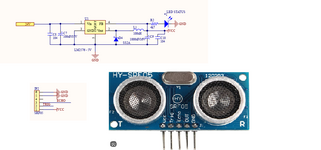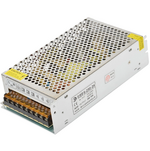haohaodk46
Member level 4
Hi Everyone,
I got issue with SRF05 distance measurment module . If I use batterry supply then the module measured distance correct but If I use a pulse power ( 220VAC => 24VDC ) then the module got noise and can't get correct distance
Maybe power supply is noise lead to IC OPAM LM324 is not correct work
The everyone can be recommend a filter power for srf05 module to It can work correctly ?
I got issue with SRF05 distance measurment module . If I use batterry supply then the module measured distance correct but If I use a pulse power ( 220VAC => 24VDC ) then the module got noise and can't get correct distance
Maybe power supply is noise lead to IC OPAM LM324 is not correct work
The everyone can be recommend a filter power for srf05 module to It can work correctly ?

